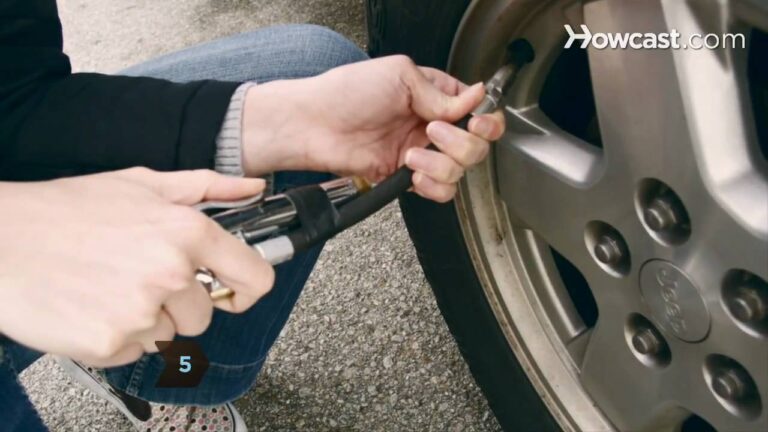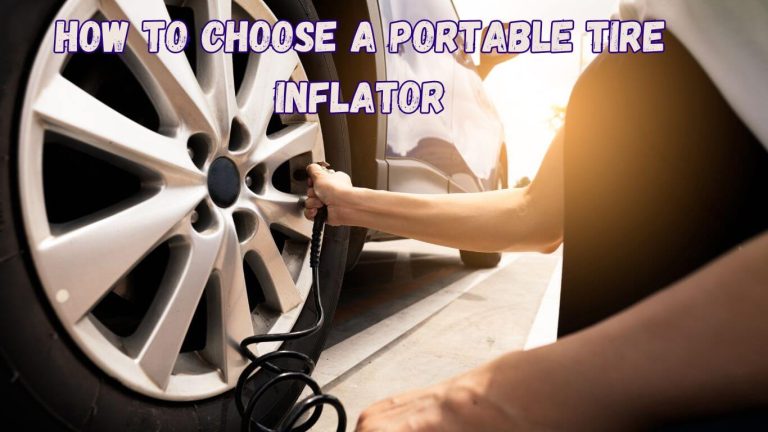How To Inflate A Presta Valve With A Schrader Pump
Ever been on a bike ride, only to find your tires are flat? It’s frustrating, especially if you only have a Schrader pump. Learning how to fill a Presta valve with a Schrader pump is a crucial skill for any cyclist. This guide will walk you through the process step-by-step, providing you with the knowledge and confidence to tackle flat tires anytime, anywhere. You’ll learn various techniques and troubleshooting tips to ensure your tires are always properly inflated.
Adapting Your Schrader Pump
This section details the various methods and adapters necessary to successfully inflate a Presta valve using a Schrader pump, ensuring a secure and effective inflation process. We’ll cover the importance of a proper fit and address potential issues encountered during the process.
Using a Presta-to-Schrader Adapter
- A Presta-to-Schrader adapter is the simplest solution. These inexpensive adapters screw onto the Presta valve, creating a Schrader-compatible connection. Ensure you choose a high-quality adapter for a reliable seal. A poorly made adapter can leak air, rendering the process ineffective.
- Properly screwing on the adapter is crucial. Ensure it’s fully engaged, then push it firmly onto the valve. A loose connection is a common cause of air leakage. Many adapters have a small ‘O-ring’ to help create an airtight seal. Make sure it is in place and not damaged.
- Always check for leaks. Before starting inflation, listen closely for escaping air. Even a small leak will greatly reduce efficiency and effectiveness. Try some soapy water, apply it around the connection to easily spot any escaping air bubbles.
Improvising without an Adapter
While not ideal, it’s possible to inflate a Presta valve without a specific adapter, though it requires more skill and care. This method involves manipulating the Presta valve itself to mimic a Schrader valve’s action. This approach, while possible, is less reliable and may result in air leaks.
- This approach is less efficient. Due to the differences in valve design, air will likely escape more easily. Many cyclists will find it difficult to build sufficient pressure.
- Exercise caution. Pushing on the valve’s pin forcefully and improperly could damage the valve mechanism. It may become stiff, and even break, rendering it unusable.
- It is highly recommended to use an adapter. This will help avoid potential issues during inflation. It is a much more efficient and user-friendly method.
Understanding Presta and Schrader Valves
This section explains the differences between Presta and Schrader valves, highlighting their unique mechanisms and why using a Schrader pump on a Presta valve requires an adapter. A clear understanding of the valves improves the process.
Presta Valve Mechanism
Presta valves, commonly found on high-performance bicycles, have a smaller diameter and a more delicate inner mechanism. The valve is opened and closed by unscrewing and tightening a small nut at the top, allowing for precise pressure control. Unlike the Schrader valve, the Presta valve is a much finer design with the possibility of being damaged with inappropriate handling.
- The smaller opening. This makes inflation with a Schrader pump more challenging and requires careful manipulation of the valve to prevent leaks.
- The internal valve stem. This stem, when pushed inward, needs to be correctly depressed during inflation to achieve a proper seal.
- Precision is key. Using too much force can damage the delicate mechanism. Gently unscrew the top nut before inflation and gently tighten it after.
Schrader Valve Mechanism
Schrader valves, ubiquitous on car tires and some bicycle tires, feature a larger opening and a simpler mechanism. The valve opens when a pin inside is depressed, allowing air to flow freely and inflate the tire efficiently. A Schrader pump’s nozzle directly and easily interacts with this design.
- The larger opening. The pump nozzle can easily enter the valve, with the design already incorporating a seal and quick release.
- Simplified Operation. This design is robust and straightforward to use. Simply push the nozzle against the valve.
- Wider compatibility. Schrader valves can be inflated using numerous types of pumps and inflators.
Troubleshooting Common Issues
This section addresses common problems encountered while inflating a Presta valve with a Schrader pump, offering practical solutions to ensure successful inflation. Addressing problems early can prevent damage and frustrations.
Air Leakage
- Check the adapter connection. A loose or damaged adapter is a primary cause of leaks. Ensure the adapter is securely screwed onto the Presta valve and that the seal is intact.
- Inspect the Presta valve. Make sure the valve itself isn’t damaged or obstructed. Sometimes, dirt or debris can block the airflow.
- Use soapy water. Apply a soapy water solution around the connection points to detect any escaping air bubbles, pinpointing the source of the leak.
Difficulty Inflating
Sometimes, the Presta valve may be stiff or difficult to open. This can be due to dirt, corrosion, or damage to the valve itself. A little lubrication can help. Gently push the pin down during inflation; if you’re not applying enough pressure you will not inflate the tire.
- Clean the valve. Remove any dirt or debris from the valve stem and around the top nut. A little WD-40 or similar lubricant can help.
- Try a different adapter. Sometimes, the problem isn’t the valve itself but an incompatible or faulty adapter.
- Check tire pressure. If the tire is already close to its maximum pressure, you may need to deflate it slightly to allow for further inflation.
Debunking Myths About Presta Valves and Schrader Pumps
Myth 1: It’s impossible to inflate a Presta valve with a Schrader pump.
False. With the right adapter, inflating a Presta valve with a Schrader pump is entirely feasible and a common practice among cyclists. The key is selecting a well-made adapter and ensuring a secure connection.
Myth 2: Using a Schrader pump on a Presta valve damages the valve.
False. Provided you use an appropriate adapter and take proper care, using a Schrader pump will not damage a Presta valve. Rough handling or using a faulty adapter, however, is more likely to cause problems.
Myth 3: Presta valves are inherently more difficult to inflate.
False. While Presta valves require slightly more finesse during inflation, especially when using a Schrader pump and adapter, the process itself is not inherently more difficult once mastered. In fact, their design allows for more precise pressure control.
Different Methods and Adapters
This section provides a comparative analysis of different methods and types of adapters, assisting in choosing the most suitable option for a user’s specific needs and preferences. We’ll explore the pros and cons of each to aid decision-making.
High-Pressure Adapters
These adapters are specifically designed for high-pressure inflation and often feature a robust construction and secure seal to prevent leaks. These are particularly useful for road bikes and other high-pressure applications.
- Durability: Constructed from high-quality materials for extended use and resistance to wear and tear.
- Airtight Seal: High-quality sealing mechanisms to minimize air leakage during inflation.
- Precise Fit: Designed to fit snugly onto the Presta valve to prevent slipping or damage.
Standard Adapters
Standard adapters are a cost-effective and generally reliable option for most cyclists. They offer a good balance between functionality and affordability.
- Affordability: Typically available at a lower cost compared to high-pressure adapters.
- Wide Availability: Easily found at most bike shops and online retailers.
- Simple Design: Easy to use and requires minimal technical expertise to install and operate.
Integrated Pump Adapters
Some pumps feature built-in adapters that allow for seamless inflation of both Presta and Schrader valves without the need for separate adapters.
- Convenience: eliminates the need for separate adapters, making the inflation process simpler.
- Reduced Risk of Leakage: often integrated into the pump nozzle itself, minimizing the possibility of leaks at the connection point.
- Added Cost: pumps with integrated adapters may be slightly more expensive than standard pumps.
FAQ
How often should I check my tire pressure?
It’s recommended to check your tire pressure before every ride. Proper inflation significantly impacts handling, comfort, and tire longevity.
What is the ideal tire pressure for my bike?
The ideal pressure depends on the tire size, your weight, and riding style. Check the sidewall of your tire for recommended pressure ranges.
What should I do if my Presta valve is stuck?
Try gently loosening the valve nut and carefully cleaning any dirt or debris. If it’s still stuck, you may need to seek assistance from a bike mechanic.
Can I use excessive force when inflating a Presta valve?
No, excessive force can damage the valve. Inflate the tire slowly and steadily, stopping when the desired pressure is reached.
What happens if I don’t use an adapter?
Attempting to inflate a Presta valve directly with a Schrader pump without an adapter is highly ineffective and may damage the valve.
What if my adapter leaks?
Check the adapter for damage, ensuring it is properly sealed and installed. If the leak persists, try replacing the adapter with a new one.
Where can I find Presta to Schrader adapters?
You can find Presta-to-Schrader adapters at most bike shops, online retailers like Amazon, and sporting goods stores.
Final Thoughts
Mastering how to fill a Presta valve with a Schrader pump is a valuable skill for any cyclist. By understanding the differences between valve types, using the correct adapter, and troubleshooting common issues, you can ensure your tires are always properly inflated. Remember to always check your tire pressure before each ride for optimal performance and safety. Investing in a high-quality adapter will significantly improve the success of your inflation attempts and save you potential headaches in the long run. Don’t let a flat tire ruin your ride; be prepared!


